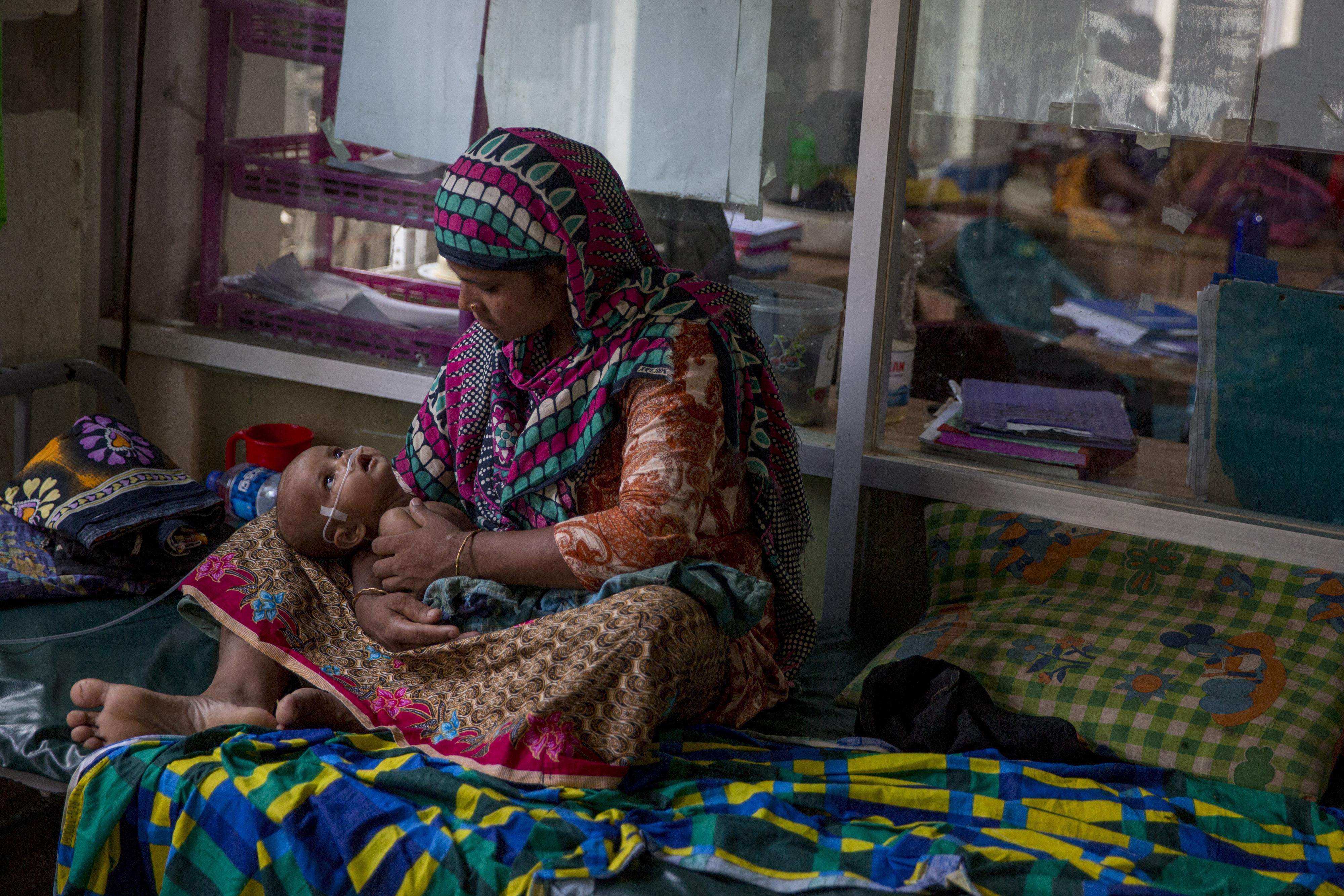Today in Geneva Doctors Without Borders/Médecins Sans Frontières (MSF) President Dr. Joanne Liu spoke at a Pledging Conference for the Rohingya Refugee Crisis organized by the United Nations Office for the Coordination of Humanitarian Affairs (OCHA), the International Organization for Migration (IOM), and the UN Refugee Agency (UNHCR) and co-hosted by the European Union and Kuwait. Here, Dr. Liu describes her recent visit to Cox’s Bazar, Bangladesh, where a refugee crisis is unfolding after renewed violence in Rakhine State, Myanmar.
"Almost 600,000 Rohingya refugees have sought safety in Bangladesh in the past two months. The numbers show no sign of slowing down—40,000 people crossed the border from Myanmar in the past two weeks alone in an indication of continuing violence in Rakhine.
It’s hard to comprehend the magnitude of the crisis until you see it with your own eyes. The refugee settlements are incredibly precarious. They look like makeshift shelters made of mud and plastic sheeting, fixed together with bamboo and scattered across little hilltops. If you stop at the main entrance of Kutupalong settlement, which was home to several thousand Rohingyas even before this most recent influx, things look somewhat organized. But if you move deeper into the settlement, into the forests and areas with no roads, it’s another story.
Read More: Scaling Up Response to a Humanitarian Crisis in Bangladesh
There are almost no services available and the vulnerability of people’s living conditions is shocking. Whole families are living under plastic sheeting in muddy and flood-prone terrain. They have very few belongings, are vulnerable to attacks from elephants, and have no access to clean water, latrines, food, or health care.
It’s a very fresh displacement and people are in survival mode, which you can clearly see in everybody’s body language. People are taking each day as it comes, trying to secure the basics to get through the day. Currently the humanitarian response is quite scattered: plastic sheeting is handed out in one location, while bags of rice or water are distributed elsewhere.
In Kutupalong, where MSF has run a medical facility since 2009, we’ve raised our inpatient capacity from 50 beds to 70 beds and we now see between 800 to 1,000 patients every day. Our teams are treating things we shouldn’t normally see, such as adults collapsing or dying from dehydration because of a simple case of watery diarrhea.
We’ve opened new medical and water and sanitation projects elsewhere in Cox’s Bazar to better respond to the exponential growth in medical needs. But more action is desperately needed. The camp is a public-health time-bomb.
Read More: For Rohingya Refugees in Bangladesh, Need for Clean Water Is Still Extreme
Let’s also not forget the root cause of the displacement of the Rohingya, which is the ongoing crisis in Myanmar. People do not flee their homes without good reason. They leave because their lives are in danger, and they have no other option. Hundreds of thousands of them still remain trapped in Myanmar, still living that terror and now cut off from humanitarian aid.
For Bangladesh to welcome over half a million people in two months is a tremendous and extraordinarily generous act. But it comes with incredible challenges. No country in the world can meet such enormous needs alone.
We urge the Government of Bangladesh to keep its borders open, and the international community to support this courageous gesture. It is the duty of donors to help prevent a public health disaster. We can only do that by ensuring we cover the vital needs of a population that has faced violence, rape, and torture.
We need more organizations on the ground building latrines, installing water pumps, providing health care, and distributing food. This can only happen if the Government of Bangladesh facilitates the presence of aid and enables a critical mass of humanitarian organizations.
This pledging conference should be a wake-up call. It is our chance to mobilize and avert a second catastrophe to restore the dignity of a population in great need.
Rohingya Refugees in Bangladesh: Voices from the Violence
ABOUT MSF IN COX’S BAZAR
MSF been present in Bangladesh since 1985 but the crisis in Cox’s Bazar has necessitated a massive increase in our capacity to respond. MSF teams have provided medical care to more than 30,000 people since the start of the crisis, effectively five times the number of who sought treatment at MSF facilities during the same period last year. In July 2017 MSF was treating approximately 200 patients a day; today that number has grown to over 2,000 patients every day across its various projects. MSF has expanded its services at its largest medical facility in the region, Kutupalong, from 50 to 70 beds, with new wards and isolation areas for infectious diseases.
The organization has also started constructing additional temporary health posts at Balukhali and Mainnerghona and mobile clinics to meet the needs of new arrivals.
In a bid to reduce the spread of disease MSF is improving water and sanitation at the informal settlements. MSF has built 200 latrines, 25 boreholes, and a gravity water supply system while also trucking water daily to the settlements. The construction of latrines and water points is planned in the worst-affected areas, in coordination with the Bangladesh Department of Public Health and Environment and other entities.
Between now and the end of December MSF aims to install an additional 100 deep tube wells, 300 shallow tube wells, and 1,000 latrines in the Balukhali and Kutupalong makeshift settlements. Click here to learn more about MSF's work in Bangladesh.




